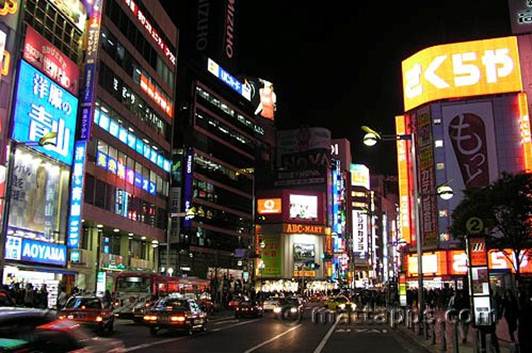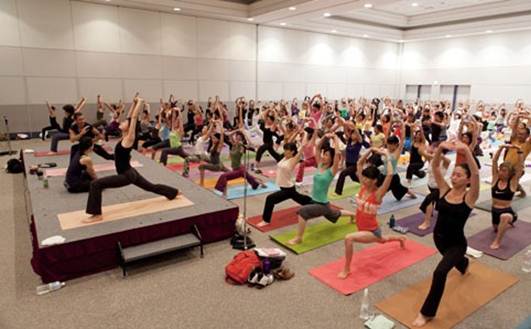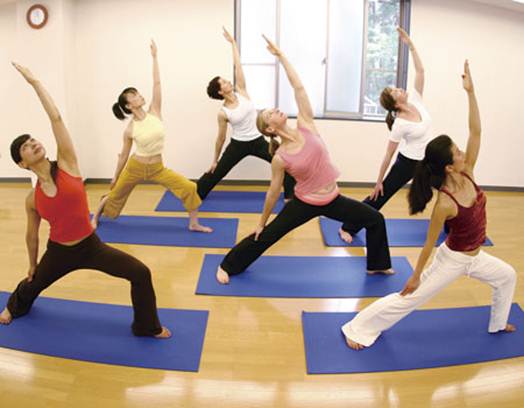Lighting up Japan
“I want to introduce many yoga styles to
Japan. I hope to make every person a little happier, make Japan a little bit
brighter, and mike this world a more comfortable place. I want to continue
doing this for the next 100 years.”

Chama Mamoru Aizawa has always been ahead
of his time. As an escape from his strict military high school in the early
1980s, Mamoru Aizawa took up surfing and spent hours each day meditating in
silence. And eight years ago, he opened his first Ashtanga Yoga studio in
Tokyo’s neon-plastered shopping district of Shibuya. At the time, many people
were wary of yoga. The country had been terrorized by the Aum Shinrikyo cult a
group that claimed yoga as part of its beliefs and was responsible for the
sarin gas attack on Tokyo’s subways in 1995. But Mamoru Aizawa believed in his
mission to spread yoga in Japan.
Now, at age 45, he owns four successful
yoga studios in Tokyo and Osaka. After the devastating earthquake and tsunami
that rocked Japan’s coast last March, Mamoru Aizawa used Twitter and Facebook
to gauge interest in mobilizing yoga-inspired relief efforts. He’s received
both praise and criticism; some have labeled it a publicity stunt, but he is
pressing on with his vision to bring yoga to victims in the affectd areas.

On reggae.
Mamoru Aizawa dreamed of being a musician.
At 20 years old, he began runiing a club. He owned it for five years, and
during his last two years at the club, he changed its focus to reggae music. He
still feels that his management style is influenced by the peaceful, easygoing
music genre.
On independence.
Mamoru Aizawa points out that, while the
emphasis on maintaining harmony and hierarchy within yoga culture has its
benefits, it also makes it difficult for people to think and act independently.
He sees yoga as a powerful tool for taking people inward so that they can get
to know themselves better. “I think Japanese people may not be as strong as
individuals, but [they] are strong as a group. It’s a positive trait with the
national soccer team. But on the other hand, it can cause tragedies such as Aum
Shirikyo, he say. “ I think yoga can help people who live in a group mentality
to become stronger, to live by themselves, and to have peace within themselves”
On the tsunami.
The day after the earthquake, Mamoru Aizawa
opened the doors to his studio. He deliberated over the decision, knowing that
aftershocks were still happening and train lines were still unstable, which
could make it difficult for students to get home (and could ultimately make him
responsible for their safety). His staff urged him to open, reminding him that
this was the exact time when his students needed the studio the most.
After the opening chant, the studio owner
recalls feeling a heaviness permeate the room. Instead of moving into their
usual routine, the students stood still, some crying, some shaking. Mamoru
Aizawa held the space, and after a while the students stared naturally
practicing together. Afterward, the students shared how grateful they were for
being able to practice together that day.
On healing.

In October of 2011, Mamoru Aizawa took a
group of volunteers to Kesenuma, a town in the northeast of Japan that was hit
hard by the tsunami. Forty-five yoga students and teachers offered a weekend of
classes, body work, food, and live music to 700 people who were living in
temporary housing. The initial reception was lukewarm especially among the
younger residents of the town.
But Mamoru Aizawa’s drive is undeterred. He
hopes to have two large events per year and to send small groups of volunteers
to the area regularly throughout the year. Eventually, he wants to open a
retreat center in the area. A true Ashtangi, Mamoru Aizawa believes that
consistency and regular yoga practice are key to the experience of healing.